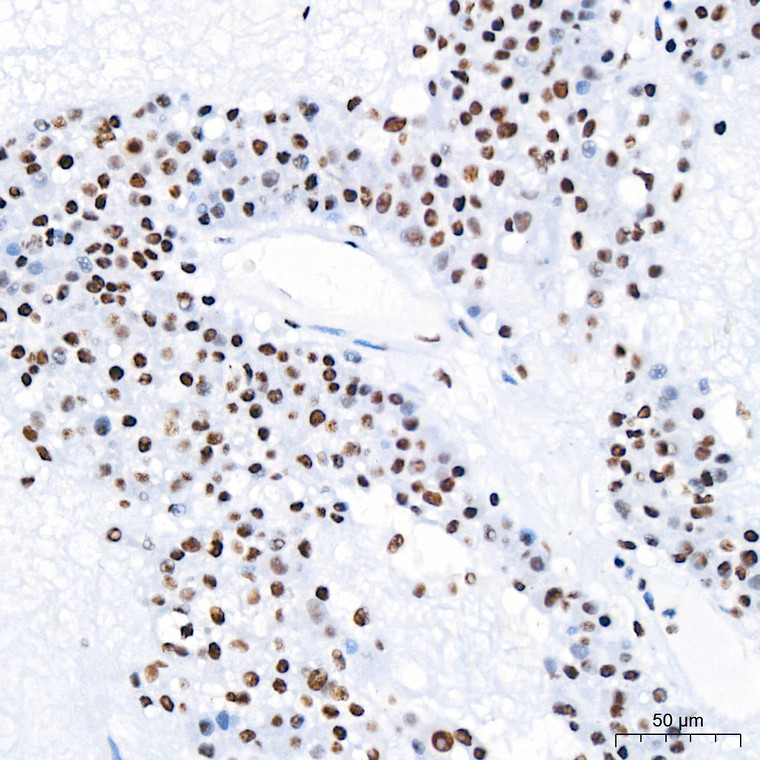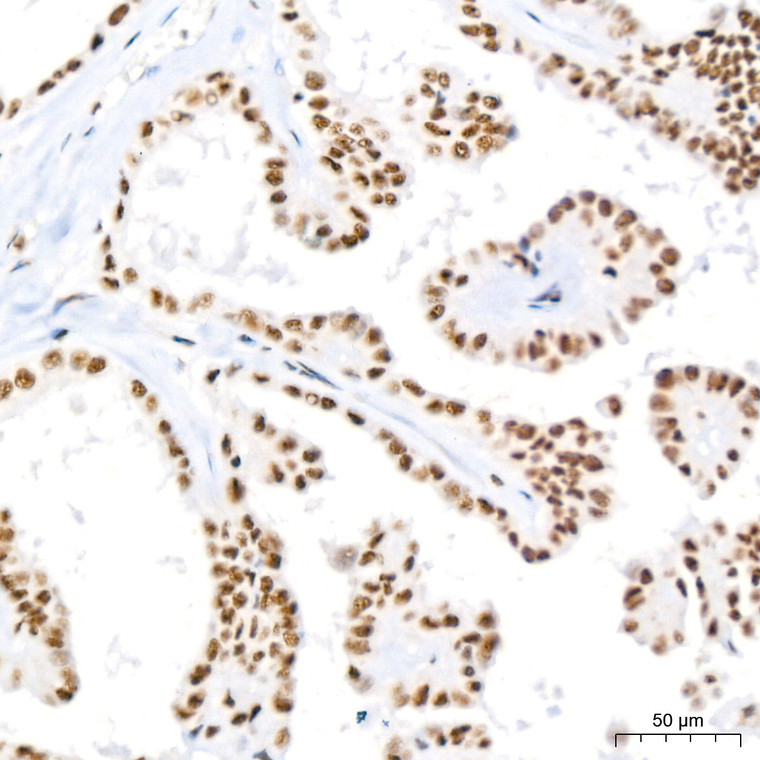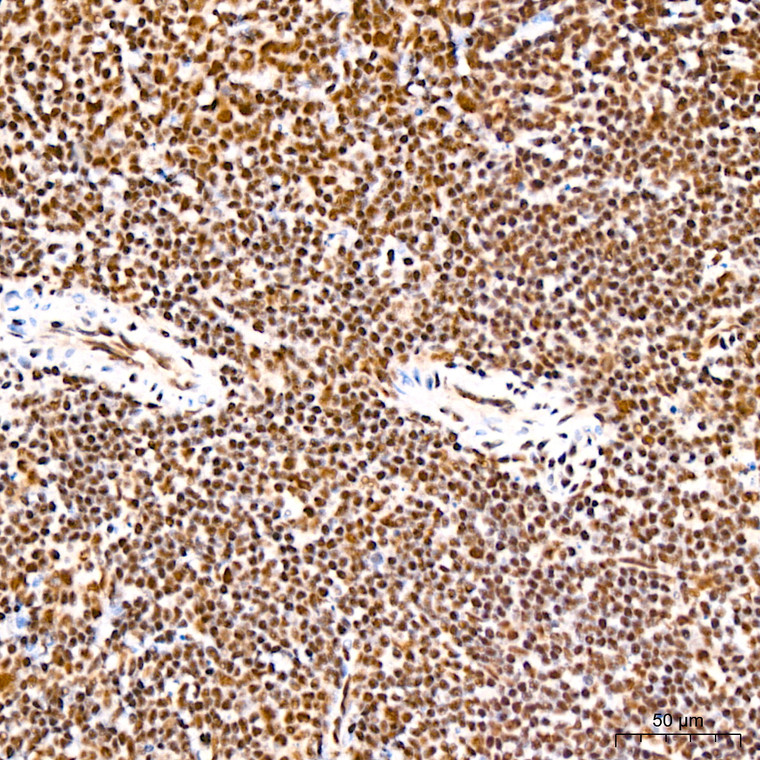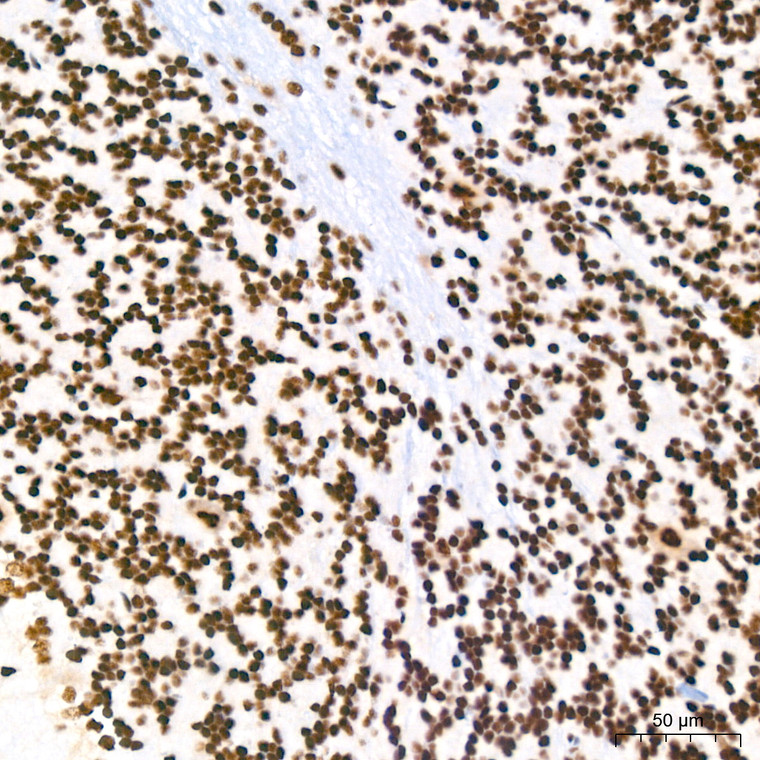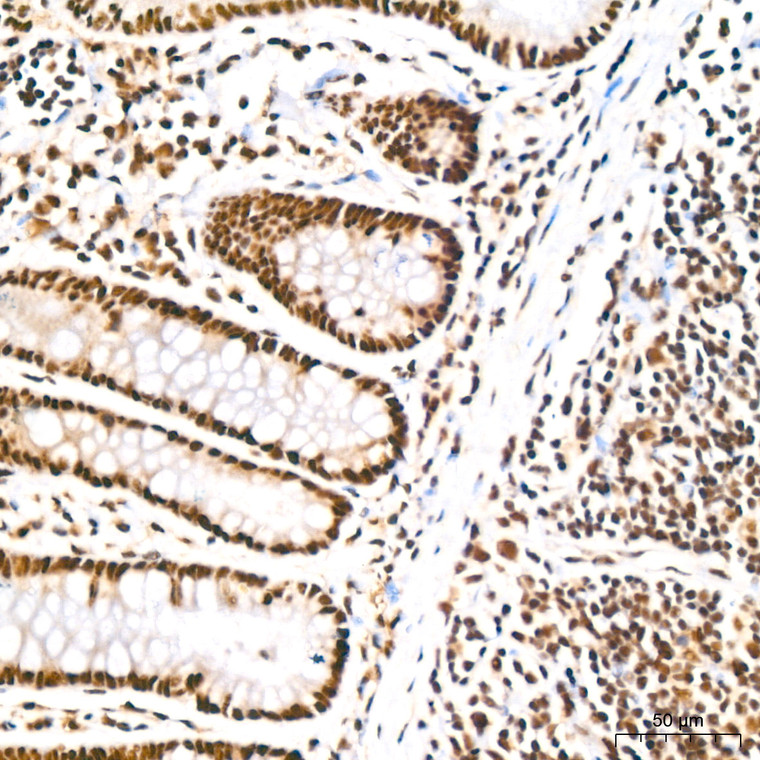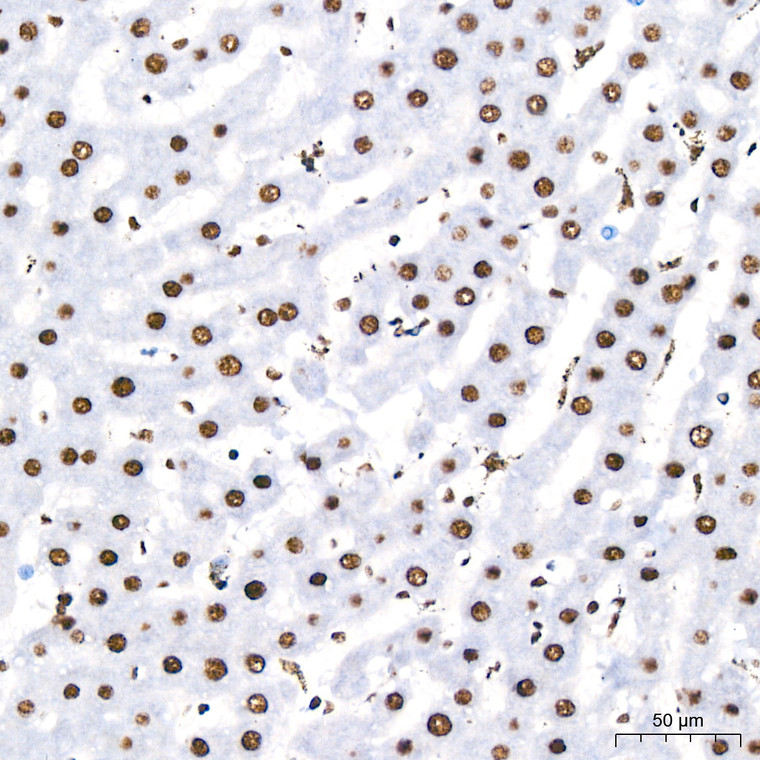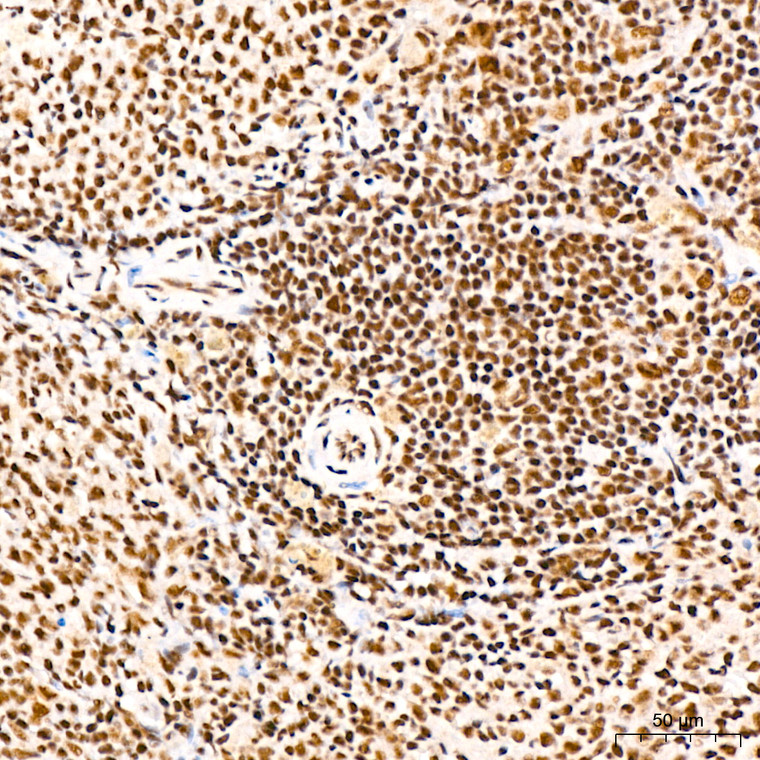-
Western blot analysis of extracts of various cell lines, using PABPN1 rabbit monoclonal antibody (STJ11101447) at 1:1000 dilution. Secondary antibody: HRP Goat Anti-rabbit IgG (H+L) (STJS000856) at 1:10000 dilution. Lysates/proteins: 25 Mu g per lane. Blocking buffer: 3% non-fat dry milk in TBST. Detection: ECL Basic Kit. Exposure time: 10s.
-
Immunohistochemistry analysis of PABPN1 in paraffin-embedded human cervix cancer tissue using PABPN1 rabbit monoclonal antibody (STJ11101447) at a dilution of 1:200 (40x lens). High pressure antigen retrieval was performed with 0. 01 M citrate buffer (pH 6. 0) prior to immunohistochemistry staining.
-
Immunohistochemistry analysis of PABPN1 in paraffin-embedded human liver cancer tissue using PABPN1 rabbit monoclonal antibody (STJ11101447) at a dilution of 1:200 (40x lens). High pressure antigen retrieval was performed with 0. 01 M citrate buffer (pH 6. 0) prior to immunohistochemistry staining.
-
Immunohistochemistry analysis of PABPN1 in paraffin-embedded human lung squamous carcinoma tissue tissue using PABPN1 rabbit monoclonal antibody (STJ11101447) at a dilution of 1:200 (40x lens). High pressure antigen retrieval was performed with 0. 01 M citrate buffer (pH 6. 0) prior to immunohistochemistry staining.
-
Immunohistochemistry analysis of PABPN1 in paraffin-embedded human thyroid cancer tissue using PABPN1 rabbit monoclonal antibody (STJ11101447) at a dilution of 1:200 (40x lens). High pressure antigen retrieval was performed with 0. 01 M citrate buffer (pH 6. 0) prior to immunohistochemistry staining.
-
Immunohistochemistry analysis of PABPN1 in paraffin-embedded human tonsil tissue using PABPN1 rabbit monoclonal antibody (STJ11101447) at a dilution of 1:200 (40x lens). High pressure antigen retrieval was performed with 0. 01 M citrate buffer (pH 6. 0) prior to immunohistochemistry staining.
-
Immunohistochemistry analysis of PABPN1 in paraffin-embedded mouse intestin tissue using PABPN1 rabbit monoclonal antibody (STJ11101447) at a dilution of 1:200 (40x lens). High pressure antigen retrieval was performed with 0. 01 M citrate buffer (pH 6. 0) prior to immunohistochemistry staining.
-
Immunohistochemistry analysis of PABPN1 in paraffin-embedded mouse liver tissue using PABPN1 rabbit monoclonal antibody (STJ11101447) at a dilution of 1:200 (40x lens). High pressure antigen retrieval was performed with 0. 01 M citrate buffer (pH 6. 0) prior to immunohistochemistry staining.
-
Immunohistochemistry analysis of PABPN1 in paraffin-embedded mouse spleen tissue using PABPN1 rabbit monoclonal antibody (STJ11101447) at a dilution of 1:200 (40x lens). High pressure antigen retrieval was performed with 0. 01 M citrate buffer (pH 6. 0) prior to immunohistochemistry staining.
-
Immunohistochemistry analysis of PABPN1 in paraffin-embedded mouse testis tissue using PABPN1 rabbit monoclonal antibody (STJ11101447) at a dilution of 1:200 (40x lens). High pressure antigen retrieval was performed with 0. 01 M citrate buffer (pH 6. 0) prior to immunohistochemistry staining.
-
Immunohistochemistry analysis of PABPN1 in paraffin-embedded rat brain tissue using PABPN1 rabbit monoclonal antibody (STJ11101447) at a dilution of 1:200 (40x lens). High pressure antigen retrieval was performed with 0. 01 M citrate buffer (pH 6. 0) prior to immunohistochemistry staining.
-
Immunohistochemistry analysis of PABPN1 in paraffin-embedded rat colon tissue using PABPN1 rabbit monoclonal antibody (STJ11101447) at a dilution of 1:200 (40x lens). High pressure antigen retrieval was performed with 0. 01 M citrate buffer (pH 6. 0) prior to immunohistochemistry staining.
-
Immunohistochemistry analysis of PABPN1 in paraffin-embedded rat kidney tissue using PABPN1 rabbit monoclonal antibody (STJ11101447) at a dilution of 1:200 (40x lens). High pressure antigen retrieval was performed with 0. 01 M citrate buffer (pH 6. 0) prior to immunohistochemistry staining.
-
Immunohistochemistry analysis of PABPN1 in paraffin-embedded rat liver tissue using PABPN1 rabbit monoclonal antibody (STJ11101447) at a dilution of 1:200 (40x lens). High pressure antigen retrieval was performed with 0. 01 M citrate buffer (pH 6. 0) prior to immunohistochemistry staining.
-
Immunohistochemistry analysis of PABPN1 in paraffin-embedded rat lung tissue using PABPN1 rabbit monoclonal antibody (STJ11101447) at a dilution of 1:200 (40x lens). High pressure antigen retrieval was performed with 0. 01 M citrate buffer (pH 6. 0) prior to immunohistochemistry staining.
-
Immunohistochemistry analysis of PABPN1 in paraffin-embedded rat spleen tissue using PABPN1 rabbit monoclonal antibody (STJ11101447) at a dilution of 1:200 (40x lens). High pressure antigen retrieval was performed with 0. 01 M citrate buffer (pH 6. 0) prior to immunohistochemistry staining.
-
Immunofluorescence analysis of C6 cells using PABPN1 rabbit monoclonal antibody (STJ11101447) at dilution of 1:100 (40x lens). Blue: DAPI for nuclear staining.
-
Immunofluorescence analysis of NIH-3T3 cells using PABPN1 rabbit monoclonal antibody (STJ11101447) at dilution of 1:100 (40x lens). Blue: DAPI for nuclear staining.
-
Immunofluorescence analysis of U-2 OS cells using PABPN1 rabbit monoclonal antibody (STJ11101447) at dilution of 1:100 (40x lens). Blue: DAPI for nuclear staining.



